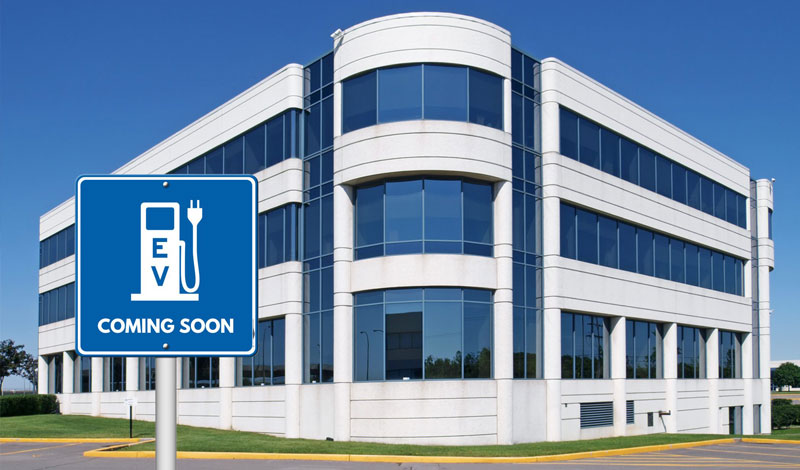The desire for electric vehicles (EVs) is growing. More than 807,100 electric vehicles were sold in the U.S. in 2022, according to Kelley Blue Book. That’s 5.8% of all vehicles sold, up from 3.2% in 2021. Although they currently represent only 5% of the U.S. vehicle market, their numbers are expanding quickly.
Employees, tenants and visitors will be looking for charging stations. Is your building ready to accommodate them? Chances are the answer is no. According to U.S. Department of Energy survey data, only a small percentage of commercial buildings have EV charging infrastructure installed, though that number is growing.
Benefits of EV charging stations
If your building is one of the vast majority that hasn’t had EV charging infrastructure installed, remember that public charging stations aren’t just a perk for EV drivers. They can help your organization, too:
- Bring in more customers. Charging stations will help entice EV-driving customers to visit your location. Charging stations can help retain existing customers or attract new ones. They can also be a great marketing tool, making your organization stand out as environmentally friendly.
- Attract new tenants. For building owners, charging stations are a great enticement for potential tenants, especially service businesses and those looking to add perks for workers or visitors.
- Generate revenue. There are various ways your organization can collect revenue for charging, such as subscription-based, pay-per-charge and pay-for-parking systems. Also, EV charging stations may encourage customers to stay longer, perhaps spending more money, while their vehicle is charging.
Planning for charging infrastructure installation
As you look to install EV charging stations on your property, there are a few factors to consider. Although every facility is different, the following steps should be part of a successful installation process.
- Analyze data to predict demand. Use available information to predict EV charging demand. This could include the EV penetration rate in your area, local demographics, and existing traffic and parking patterns in your locality or property.
- Determine the best location for charging infrastructure. Assess your overall property and physical parking layout, as well as your electrical infrastructure, when determining the number and location of charging stations. Consider local building codes, as well as Americans with Disabilities Act regulations.
- Select charger type. Level II and DC Fast Charging (previously known as Level III) charging units are typically used in commercial applications. Level II chargers are more common, but they take longer to charge vehicles. DC Fast Chargers are much faster, but also much more expensive. They might be a better fit for services businesses, such as grocery stores and food service facilities.
- Plan for installation. Determine station infrastructure needs, such as lighting, signage and security cameras. Review charger features, such as billing options and connectivity. Consider installation needs, such as trending or directional boring equipment. Investigate any permitting and fee requirements. Make sure you plan ahead enough to involve the local utility in case there may be some additional capacity necessary on their end.
- Build for future accommodations and capacity expansion. Design charging stations and accompanying electrical infrastructure with future expansion in mind. Put conduit and other equipment in place for more charging stations. Build in flexibility for both existing as well as new types of charging technology whenever possible.
Installing EV charging infrastructure is a complex process involving many moving parts. Work with an electrical contractor experienced in charging installations. The National Electrical Contractors Association provides a database where you can search for contractors in your area that specialize in installing charging stations.
Financing options
While EV charging stations have many benefits, installing them can be expensive. Federal tax credits of up to 30% of the installed costs of eligible EV charging infrastructure are available, subject to a limit of $100,000.
Look for state and local incentives in your area that can help reduce the cost of installation. By taking steps now, you’ll ensure that your building is ready for the EV future. Select your state to learn more.
